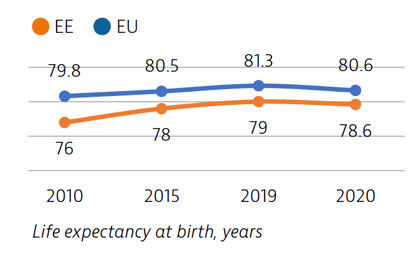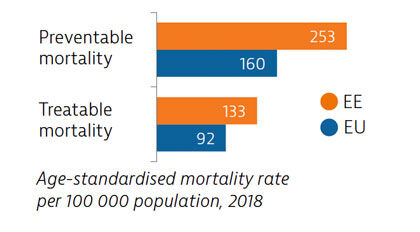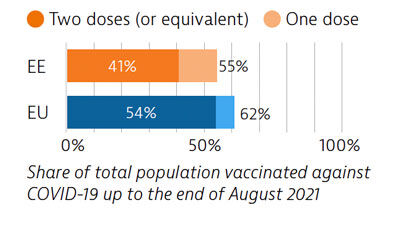The life expectancy in Estonia has grown strongly over the last two decades. However, while the health status of the population has been getting closer to the EU average since 2001, aggregate numbers obscure inequalities by region, gender and socioeconomic group.
Compared to most other EU countries, Estonia spends less on health care, and although direct government transfers were injected into the system to address the Covid-19 pandemic, the health system remains chronically underfinanced.
As a leader in e-health, Estonia’s health system has been able to effectively support a variety of pandemic response measures and to deliver health services.
Estonia’s health status
Since 2000, Estonia’s life expectancy has increased more than any other EU country, although it fell by 0.4 years between 2019 and 2020 due to the Covid-19 pandemic. On average, women live 8.5 years longer than men; this gap in life expectancy by gender is much greater than the EU average of 5.6 years. Sizeable health inequalities also exist across income levels, regions and education.

Risk factors
Behavioural risk factors accounted for nearly two fifths of all deaths in Estonia in 2019. Overweight and obesity are a growing concern. More than one in five Estonian adults is obese, and obesity is increasingly common among adolescents. Smoking rates have been decreasing, but nearly 20% of adults still smoke daily. Similarly, alcohol consumption has declined overall but is still high for adult men and adolescents.

Estonia’s health system
In per capita terms, spending on health in 2019 was €1,733, which is less than half the EU average. Total health expenditure was also significantly lower when measured as a share of GDP (6.7% compared to an average of 9.9% of GDP in the EU). Around three quarters of health spending in Estonia comes from public sources, with one quarter from out-of-pocket payments – mostly for medicines and dental care.

Effectiveness
Both preventable and treatable mortality are higher in Estonia than the EU averages, but they have decreased substantially since 2012. Ischaemic heart disease remains one of the leading causes of avoidable deaths. Estonia has lower avoidable hospital admissions for chronic diseases than many other EU countries.

Accessibility
Before the pandemic, Estonia’s population reported the highest level of unmet medical needs in the EU. During the Covid-19 crisis, reported unmet needs were higher than usual, but the rapid uptake of remote consultations supported by existing digital infrastructure helped to maintain access to care.

Resilience
Estonia leveraged its extensive digital infrastructure to respond to the Covid-19 pandemic, including for testing and contact tracing. Digital tools also facilitated the rollout of the Covid-19 vaccination programme, with 41% of the population receiving two doses (or equivalent) by end August 2021.

OECD/European Observatory on Health Systems and Policies (2021), Estonia: Country Health Profile 2021, State of Health in the EU, OECD Publishing, Paris/European Observatory on Health Systems and Policies, Brussels.











